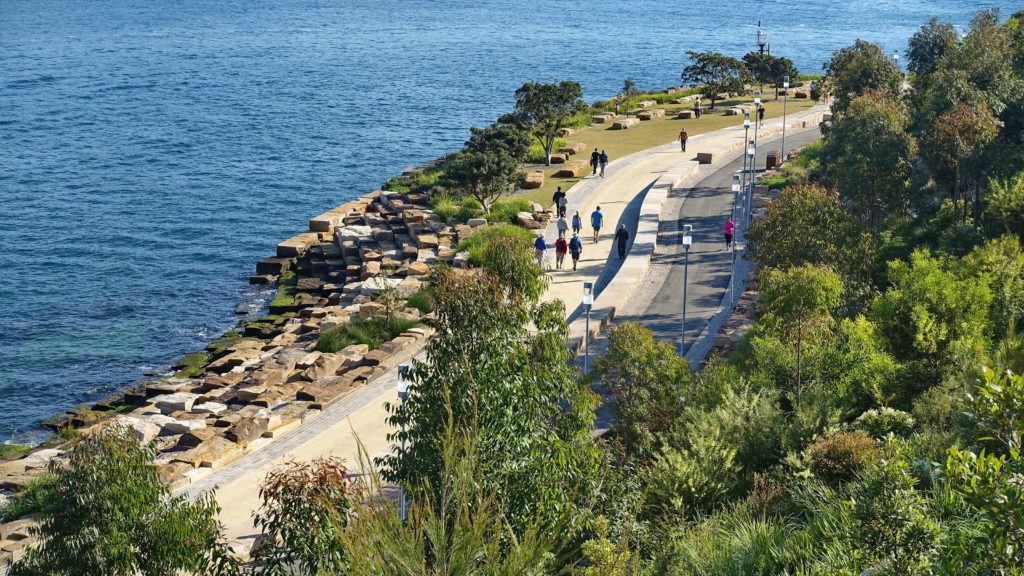
Architect
PWP Landscape Architecture
Type of Area
Bay
Land/water interaction
Promenade
Riprap
Terraces/steps
Built Environment Types
Low Built
High Green
Scale of Impact
District/ neighbourhood
City
Regional
Intervention Scale (Spatial)
Large site
Project Types
Urban waterfront development
Outdoor recreation
Public green space regeneration
Urban/ Rural
Inner urban Area
Visibility and Openness
Fully enclosed
Fully contained view
Reclaiming the landform.
Barangaroo Reserve is a multi-award winning new park completed in 2015 to designs by PWP (Peter Walker and Partners) together with Johnson Pilton Walker for the Barangaroo Delivery Authority. The project redeveloped a six-hectare abandoned industrial dock and shipyard area in Sydney Harbour. The place was originally known as Miller’s Point before it was flattened to make room for wharves, containers and maritime industrialization.
From the 1830s and 40s onwards the rocky headland was levelled and the small bay filled to produce a flat, rectangular area that functioned as a dockyard until the 1960s when it was closed and became inaccessible. The new name is in honour of an aboriginal woman who lived and traded there in the 1830s.
The project design eliminated this flat area and rebuilt the form of the headland in both plan and profile, clad along its lower levels using specially formed and laid sandstone blocks in what is called a tessellated pavement, inspired by the natural bedding and joints of sedimentary sandstone. This was used to clad the new landform, taking quarried stone (sourced from within the site when constructing underground parking) and laying it according to the natural rock bedding in the area.
The result of the new landform is a stepped stone surface arising out of the water (including artificial rock pools exposed at low tide) to a headland summit 18 metres above the water level offering spectacular views over the rest of Sydney Harbour. The paving does not emulate natural variability but is more formal in order to emphasise the fact that it is artificial.
The use of sawn stone is the main feature of most of the elements used besides the terraces, to maintain the design unity. There is also extensive planting of native species in an introduced artificial soil. Alongside the stone terraces and the public road is a promenade, which gives the form for the parallel alignment of the terraces from which access to the site is obtained down steps and along ramps. The site also established a connection with a longer coastal walk.
Perception and Meaning
Place identity
Imageability
Sense of place
Accessibility
Legibility
Health and Wellbeing
Restorativeness
Increased physical activities
Aesthetic experience
Place affordance
Increases socialisation
Interaction with Water
Visual
Tactile: touching

The project scores show that the site has excellent accessibility, a very high design quality – albeit with some expensive maintenance – and a wide range of facilities – although rather exposed to sun and wind, at least until the trees grow to a reasonable height.
It also scores highly for health and well-being aspects. Direct water connections and activities are limited but of course the site is strongly linked visibly to the water. The physical activities possible are many and varied apart from formal sports on land or water, these being impractical or inappropriate for the site.
